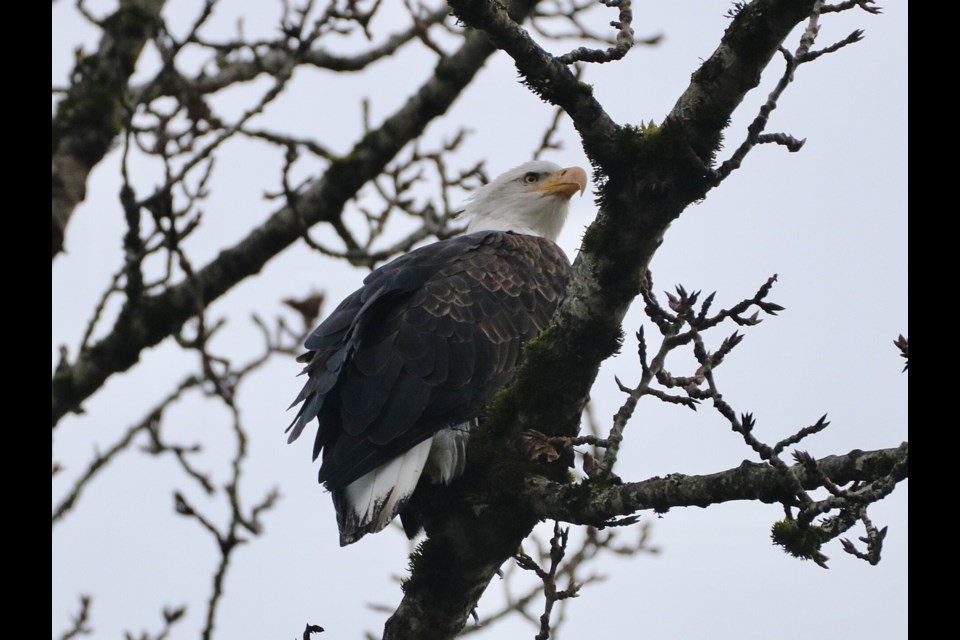Birds are a familiar sight in Squamish, whether it’s the majestic bald eagles circling over the estuary or sandpipers darting along the shoreline.
But behind these beautiful scenes, a quiet shift is happening.
According to the 2024 State of Canada’s Birds report, many bird species are experiencing changes in their migration patterns due to climate change. For Squamish, a crucial stop on the Pacific Flyway, these changes have both local and global implications.
The Pacific Flyway is a major migratory bird route that stretches from Alaska to Patagonia in South America. It’s one of North America’s four main flyways, with millions of birds making the journey each spring and fall.
“Birds are a window into how our ecosystems are changing,” says Christopher Di Corrado, a bird biologist based in Squamish.
“And the signs are all around us.”
Shorebirds in decline
Shorebirds like sandpipers and plovers, which rely heavily on the Skwelwil'em Squamish Estuary, are facing significant challenges.
According to the report, shorebird populations are declining due to habitat loss both in Canada and along their migratory routes.
“The estuary is a critical stopover for these birds,” says Rémi Torrenta, British Columbia projects co-ordinator for Birds Canada.
“It’s a place for them to rest and refuel. Without it, their chances of completing their migration drop significantly.”
Locally, efforts to protect the estuary have helped maintain its role as a haven for these species.
But the battle is far from over.
Birds travelling from tropical regions are guided by light changes to start their migration.
“They might leave at the usual time,” said Di Corrado.
“But when they arrive in places like Squamish, spring may have come earlier. Insects—their primary food source—could emerge sooner, creating a mismatch. Some insects provide better nutrients than others, so timing is crucial when birds need to feed their young.”
According to a study published in Mitigation and Adaptation Strategies for Global Change, warmer temperatures and changing weather are causing spring to arrive earlier each year.
This throws off the timing for migrating birds, who travel long distances expecting food like insects and plants to be ready when they arrive. But now, by the time they get to these spots, much of their food has already peaked and started to decline.
This timing problem, called “trophic mismatch,” means birds struggle to find enough to eat, leaving them with less energy and making it harder for them to breed successfully.
Waterfowl populations on the rise
Not all bird news is grim.
Waterfowl, including ducks and geese, have shown remarkable population growth.
Nationally, waterfowl numbers have increased by 150% since 1970, thanks to conservation initiatives like wetland protection.
Squamish’s Skwelwil'em Squamish Estuary Wildlife Management Area has played a pivotal role in this success.
“Waterfowl really benefit from the wetland conservation work happening here,” Torrenta says. “They’ve got a safe place to winter and plenty of food to sustain them.”
Locals might notice larger flocks of ducks and geese in the estuary during the colder months, a sign of how important Squamish has become for these birds.
Bald eagles thrive in Squamish
If there’s one bird that symbolizes Squamish, it’s the bald eagle.
Every winter, crowds gather across from Brackendale Eagles Park to watch these majestic birds as they feast on spawning salmon.
Their recovery is part of a broader national trend. Raptors, including eagles, have seen a 110% population increase, likely thanks to pesticide bans and targeted conservation efforts.
“The bald eagle population is a huge success story,” Di Corrado says. “And Squamish plays a big role in that, especially during the salmon runs.”
The estuary and surrounding rivers provide the perfect environment for eagles to thrive. Every winter, from December to February, bald eagles gather at the Squamish Estuary to feast on spawning salmon.
This group is Canada’s largest congregation of bald eagles and represents nearly 3% of the world’s bald eagle population, according to data from BirdLife International.
Wetland birds show mixed results
Wetland birds, including the Great Blue Heron, are another group tied closely to Squamish’s estuary.
Nationally, these birds have experienced mixed trends, with some populations stabilizing while others decline.
The 2024 State of Canada’s Birds report also highlights that while wetland bird populations have grown in some areas, habitat loss continues to threaten their future.
“The Great Blue Heron is a common sight in Squamish,” says Di Corrado. “They’ve benefited from wetland conservation, but we can’t take that for granted.”
What Squamish can do to help
While climate change is a major factor, migrating birds face other significant threats.
Predation by cats is one of them. “Cats are a massive problem for birds in North America,” Di Corrado says.
“Keeping cats indoors is better for both birds and the cats themselves.”
Another common danger is building collisions.
Birds often mistake reflective glass for an open sky. “Window strikes are a major issue,” said Di Corrado.
“A recent study showed that these collisions kill more birds than we previously thought.”
In Squamish, local organizations are taking action.
“[Squamish Environment Society] has installed small black dots on downtown glass railings to prevent strikes,” Di Corrado says.
“Homeowners can do the same by adding decals or UV-reflective films to their windows.”
Christopher suggests expanding these efforts– “Individuals can apply similar solutions at home, and municipalities could require developers to use bird-friendly glass with embedded UV films. These films are visible to birds but invisible to us.”
“Providing habitat, food, water, and shelter for birds—especially during migration and nesting seasons—is something everyone can do. But the broader issue of climate change requires large-scale action,” he said.
Bhagyashree Chatterjee is The Squamish Chief’s Indigenous affairs reporter. This reporting beat is made possible by the Local Journalism Initiative.




